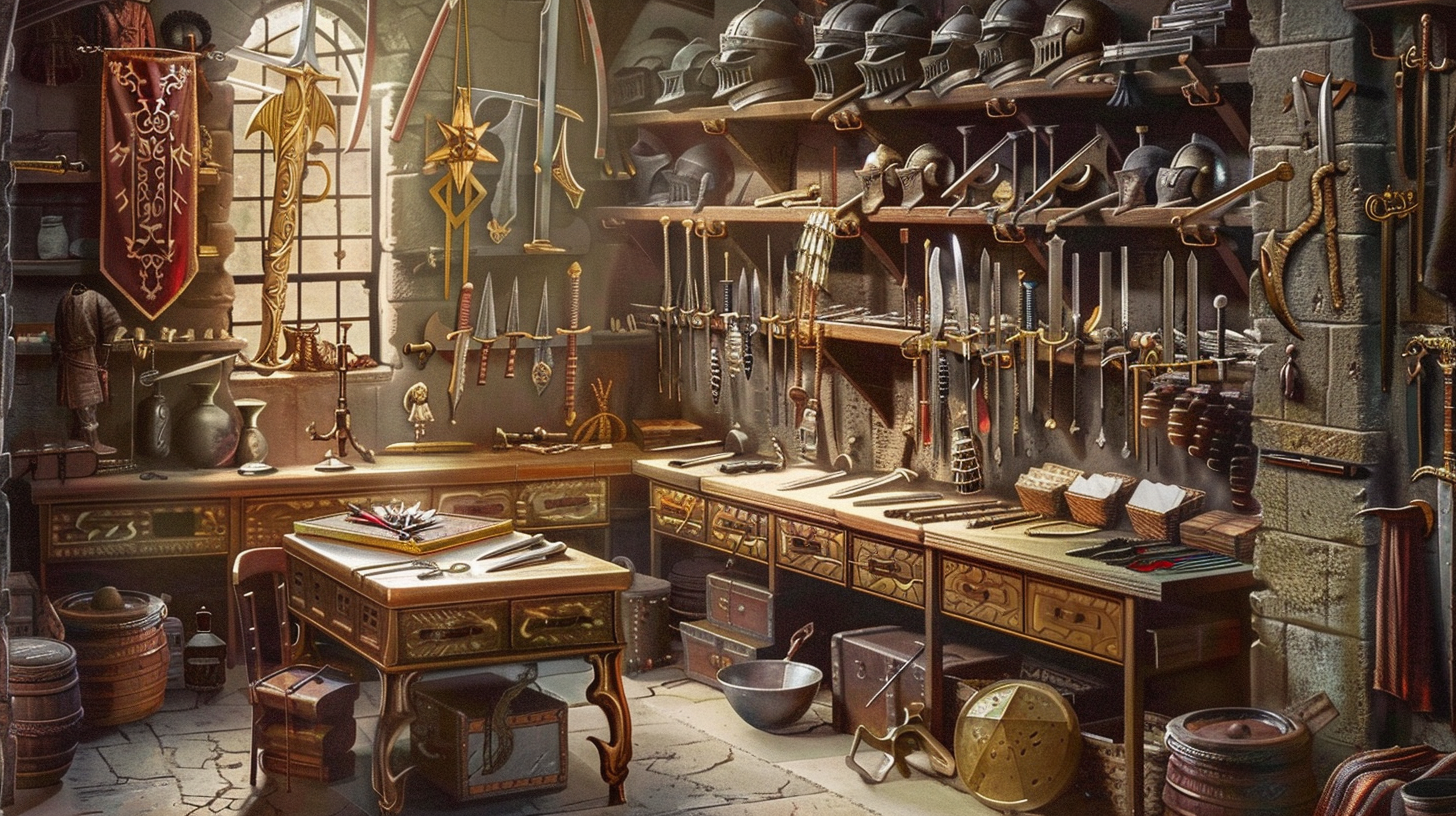By Quinton Urquhart
October 2nd, 2024

Creating your first character sheet is one of the most exciting parts of starting your adventure in Dungeons & Dragons. It’s where you’ll shape your character’s backstory, abilities, and future in the game. But if you’re new, it can seem overwhelming. From ability scores to skills, there’s a lot to cover.
In this guide, we’ll break down how to create a perfect D&D character sheet step-by-step, ensuring you’re ready to dive into your first campaign with confidence. We'll cover everything from choosing a class to filling in the details that bring your character to life. Whether you’re using our character sheets or doing it by hand, we’ve got you covered.
What Is a D&D Character Sheet?
A character sheet is where all the essential details about your character are stored. This includes:
- Basic Info: Name, race, class, level, background, and alignment.
- Ability Scores: Strength, Dexterity, Constitution, Intelligence, Wisdom, and Charisma.
- Skills: Your character’s strengths in areas like stealth, persuasion, and survival.
- Proficiencies: What weapons, tools, or skills your character is proficient in.
- Equipment: Weapons, armor, tools, and items you carry.
- Spells (if applicable): For magic users, details of spells known and spell slots available.
Understanding the character sheet is critical for making sure your character is ready for adventure.
Step 1: Choose Your Race

The first thing you’ll do on your character sheet is choose a race. In Dungeons & Dragons, each race offers unique bonuses that influence your abilities and roleplaying. Popular races include Humans, Elves, Dwarves, and Tieflings, each offering different boosts.
For example:
- Humans get a bonus to all ability scores, making them versatile.
- Elves are quick and agile, perfect for characters who want to focus on Dexterity.
- Dwarves are hardy and tough, making them ideal for tanky fighters.
When choosing your race, think about how it will mesh with your class and playstyle. For new players, it’s best to choose a race that complements the class you want to play. You can find a detailed breakdown of all the races in Dicebreaker's races and species guide.
Step 2: Choose Your Class

Once you’ve decided on your race, you’ll pick a class, which determines your character’s skills, proficiencies, and abilities in combat. Common classes include:
- Fighter: Great for beginners who want to get into combat.
- Wizard: A magic user with a vast array of spells.
- Rogue: A stealthy character skilled in sneaking and backstabbing.
- Cleric: A healer with divine powers, perfect for players who want to support the party.
Each class offers different benefits, and choosing the right one is key to enjoying your campaign. Be sure to think about how your class will interact with your race’s bonuses. For example, an Elf Wizard takes advantage of the race’s Dexterity and Intelligence bonuses.
Check out this guide to D&D classes for an in-depth look at which might be the best fit for you.
Step 3: Assign Your Ability Scores
Now that you’ve picked a race and class, it’s time to assign your ability scores. The six core abilities in D&D are:
- Strength (STR): Physical power.
- Dexterity (DEX): Agility and reflexes.
- Constitution (CON): Endurance and health.
- Intelligence (INT): Reasoning and memory.
- Wisdom (WIS): Perception and insight.
- Charisma (CHA): Charm and leadership.
You’ll roll dice (typically 4d6 and drop the lowest) or use a point-buy system to determine these numbers. Once you have your raw scores, apply racial bonuses (for example, Dwarves get +2 to Constitution).
For beginners, it’s crucial to prioritize the ability score that fits your class’s main strengths. For example:
- Fighters need high Strength or Dexterity (depending on weapon choice) and Constitution.
- Wizards should focus on Intelligence for spellcasting.
Tools like our dynamic character sheets can help automate this process, ensuring your scores are accurately applied to your character sheet.
Step 4: Choose Skills and Proficiencies
Now that you’ve assigned ability scores, it’s time to choose your skills and proficiencies. Your class and background determine which skills you can choose from. For example, a Rogue might pick Stealth and Sleight of Hand, while a Wizard might focus on Arcana and Investigation.
In D&D, proficiency means your character is especially good at certain tasks. If you’re proficient in a skill, you get to add your proficiency bonus (which increases as you level up) to the ability modifier.
For beginners, it’s a good idea to pick skills that align with your class’s strengths. If your character has high Dexterity, choosing Acrobatics or Sleight of Hand will maximize your effectiveness.
Step 5: Choose Your Equipment

Your class and background also determine your starting equipment. This includes weapons, armor, and tools. Your equipment can make or break your combat effectiveness, so it’s essential to choose wisely.
For instance:
- Fighters will want to choose between heavy armor and shields for better defense or a two-handed weapon for maximum damage.
- Wizards should carry spellcasting focuses like a wand or staff, along with a dagger or quarterstaff for defense.
If you’re unsure, consult your Dungeon Master or reference our Basic Rules.
Step 6: Add Spells (If You’re a Spellcaster)
If you’ve chosen a spellcasting class like Wizard, Cleric, or Bard, you’ll also need to fill out the spells section of your character sheet. Each class has its own list of spells, which you can choose from based on your level and spellcasting ability score (like Intelligence for Wizards or Charisma for Bards).
At level 1, you’ll have access to a small pool of cantrips (spells that can be cast infinitely) and spell slots (limited use per long rest). Be sure to choose spells that align with your character’s role in the party. For example:
- Wizards might want a mix of offensive spells like Magic Missile and utility spells like Detect Magic.
- Clerics should pick a healing spell like Cure Wounds and a defensive spell like Shield of Faith.
Step 7: Final Touches
With all the major pieces of your character sheet filled in, it’s time to add the final details. These include:
- Character Name: Pick something that fits your character’s background and world.
- Backstory: Create a brief backstory that explains who your character is and why they’re adventuring.
- Alignment: Decide if your character is Lawful Good, Chaotic Neutral, or somewhere in between. Alignment helps define their moral compass.
- Personality Traits, Ideals, Bonds, and Flaws: Use these to add depth to your character’s roleplaying.
For some inspiration, check out this guide to writing a compelling D&D backstory.
Conclusion
Creating the perfect D&D character sheet doesn’t have to be daunting. By following these steps and understanding the key components, you’ll have a fully fleshed-out character ready to embark on epic adventures. Remember, your character sheet is more than just numbers—it’s a representation of your creativity and how you’ll engage with the world of Dungeons & Dragons.
If you’re ready to get started, try out DND Sheets for easy-to-use fillable character sheets and tools designed to enhance your gaming experience. Happy adventuring!